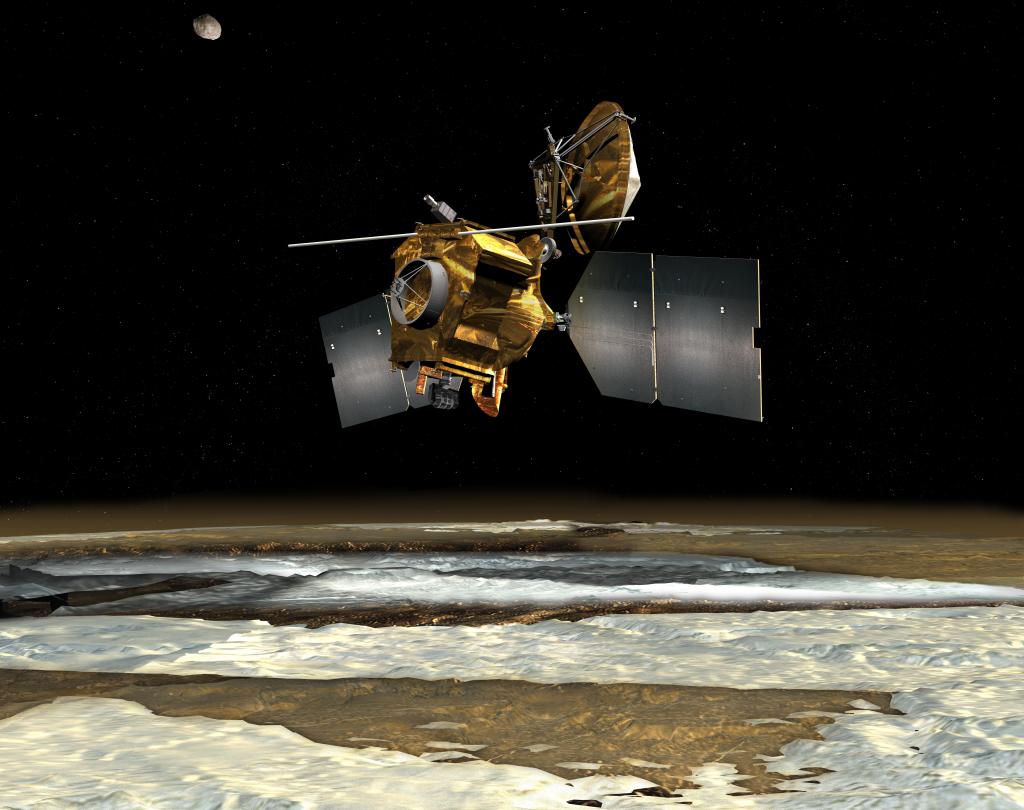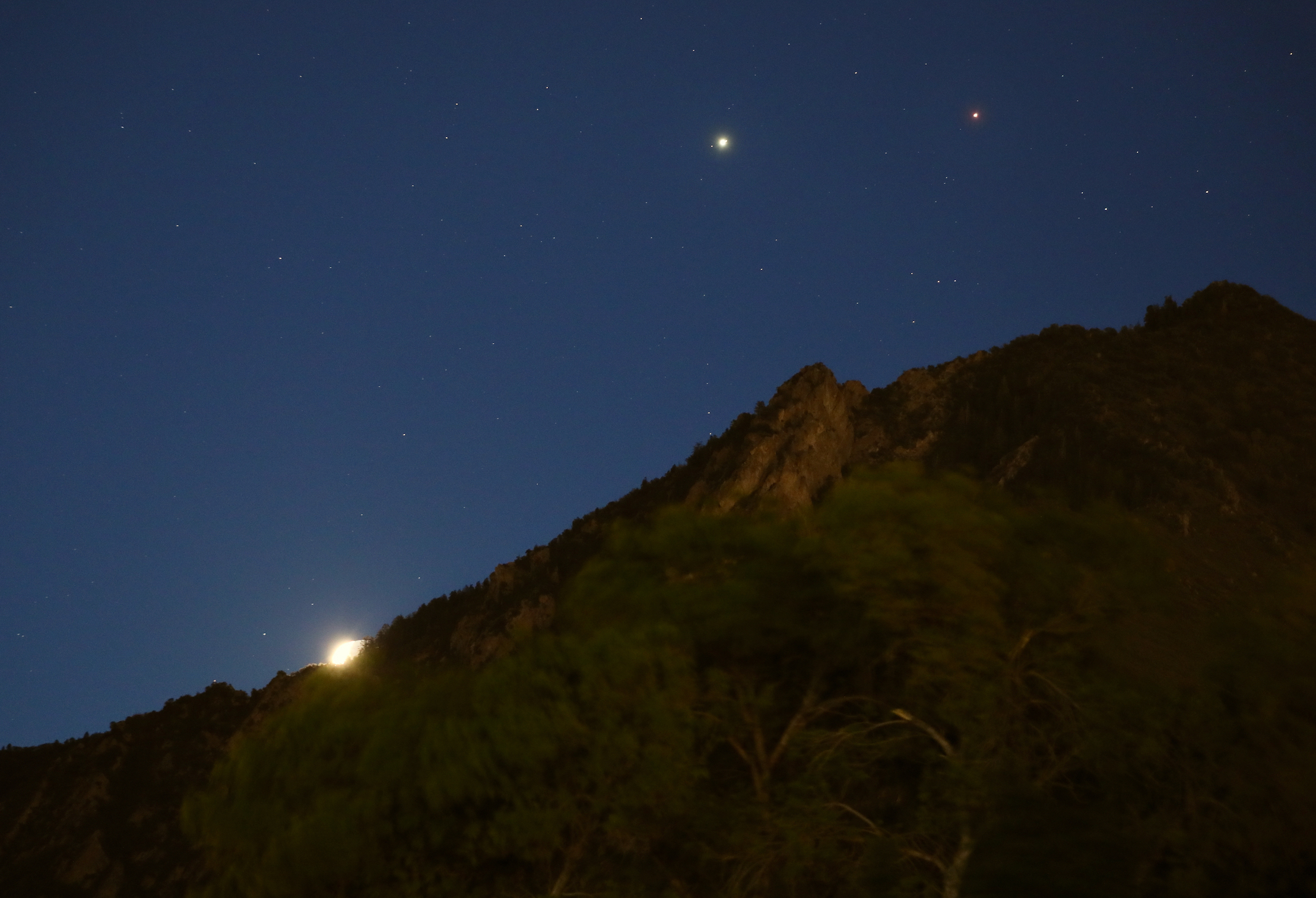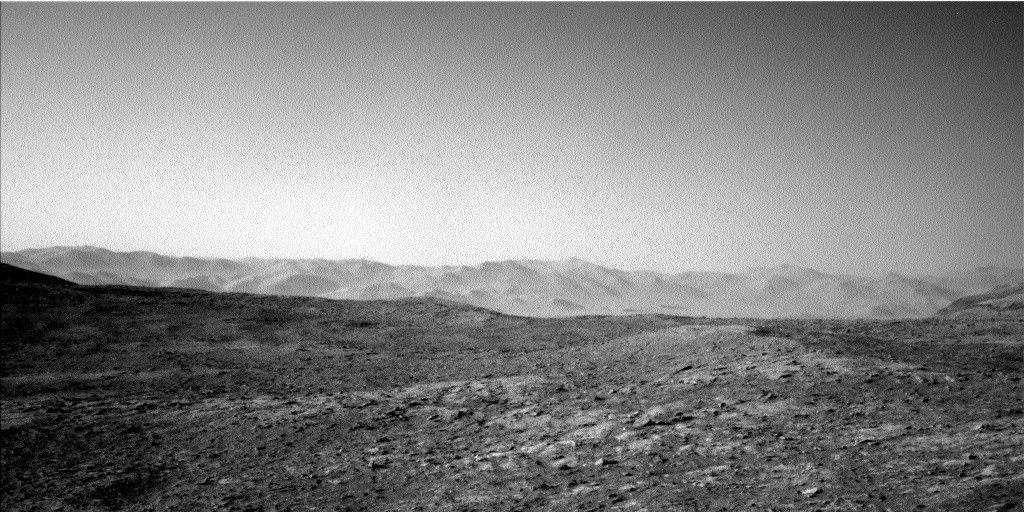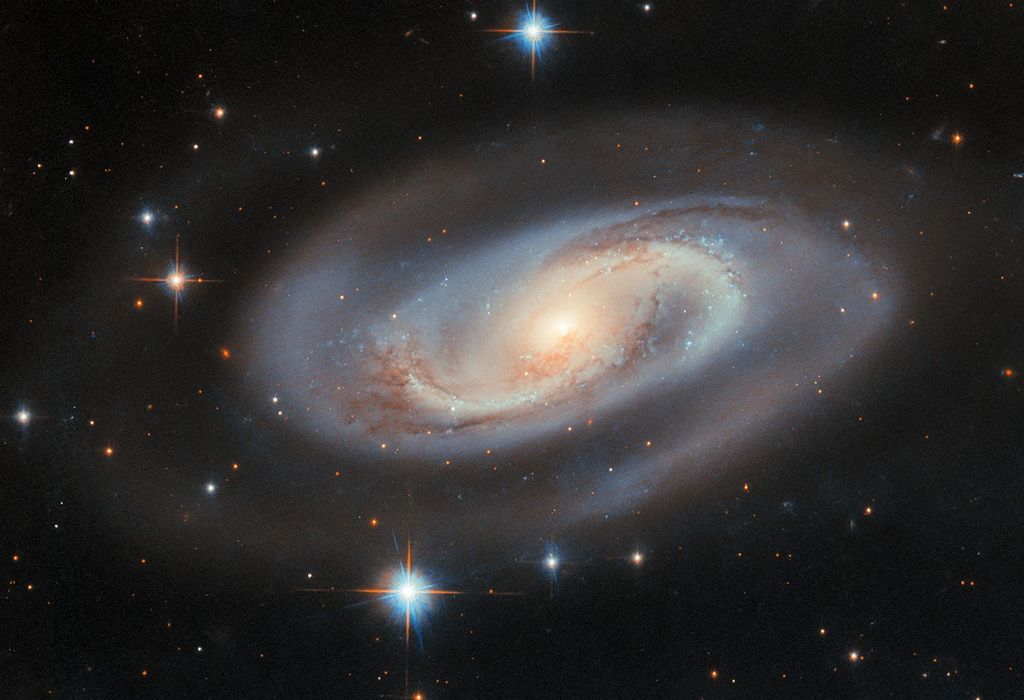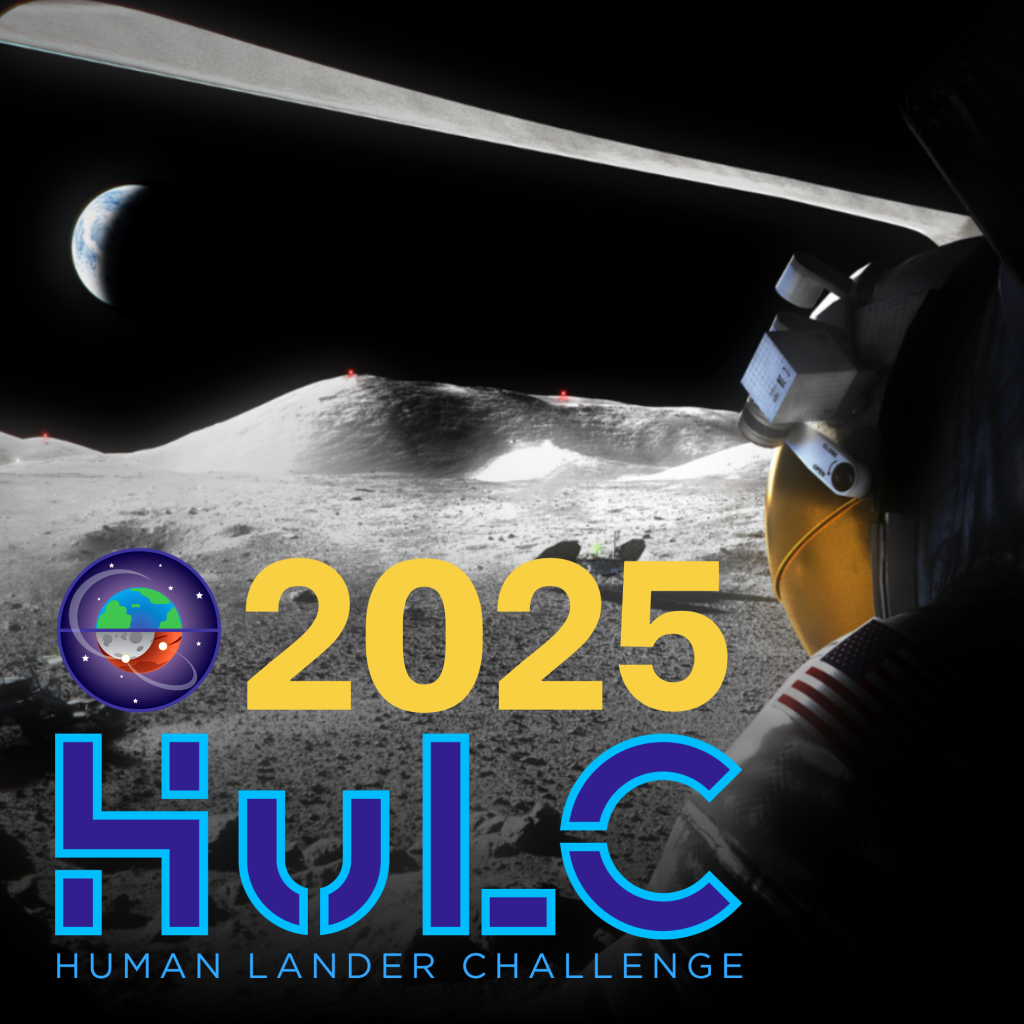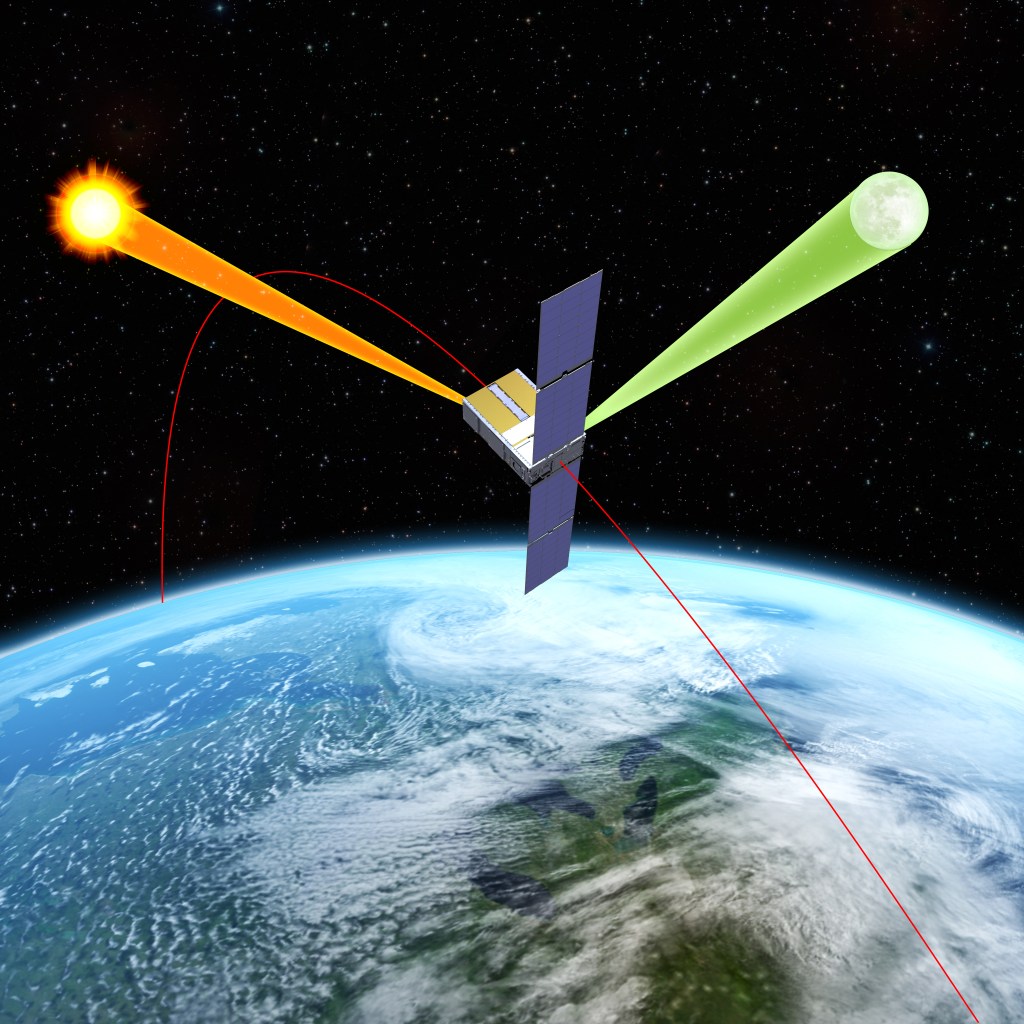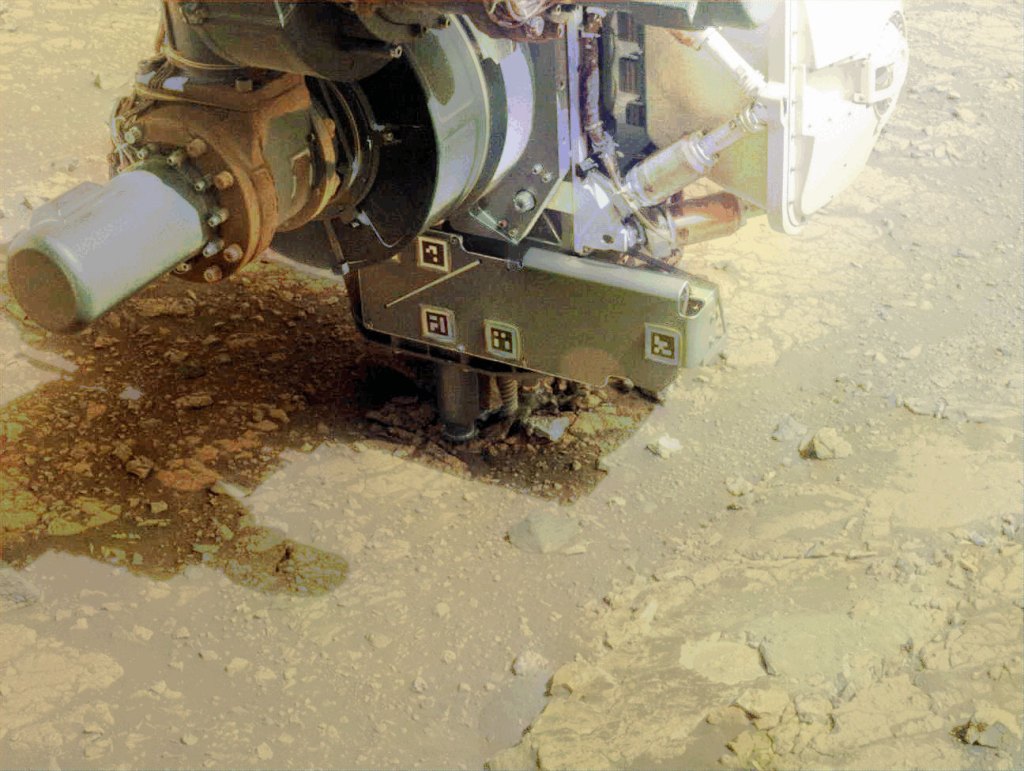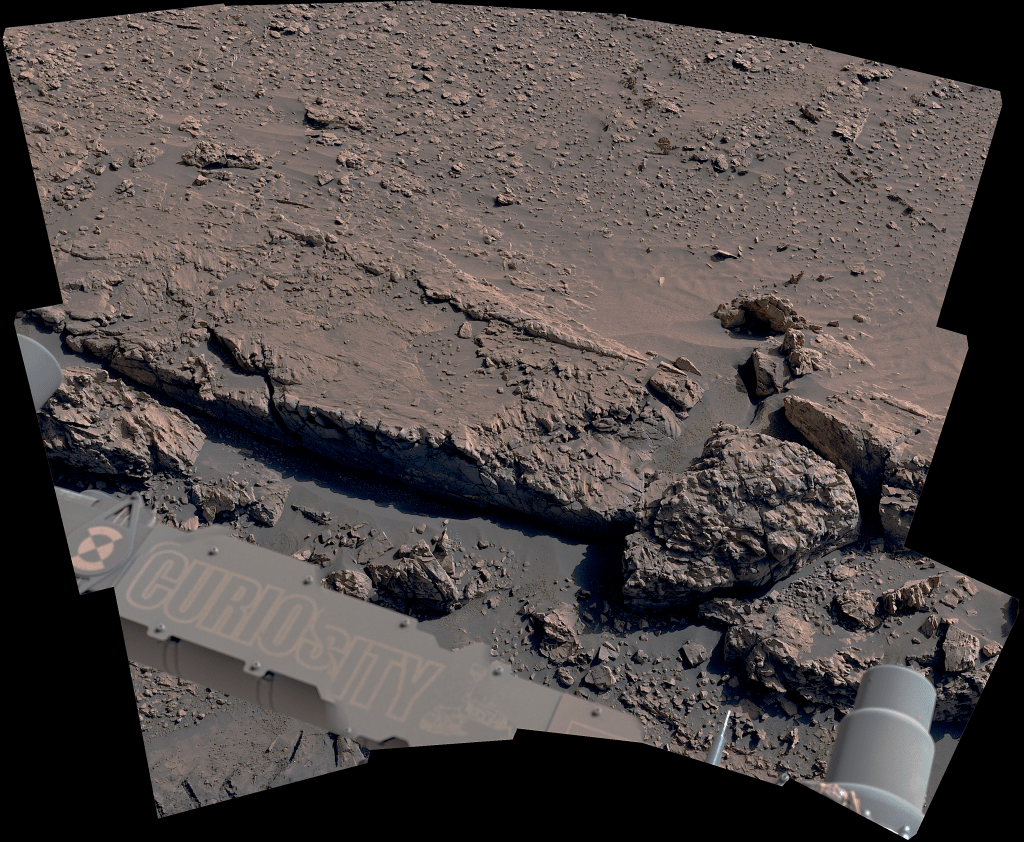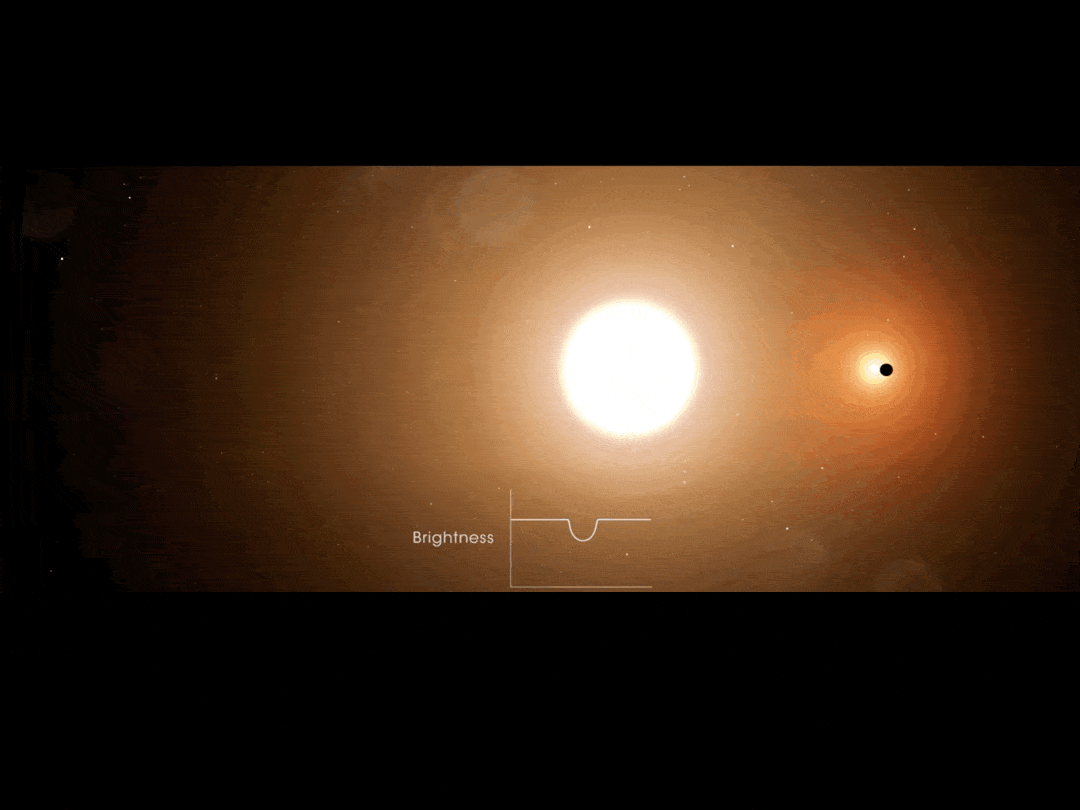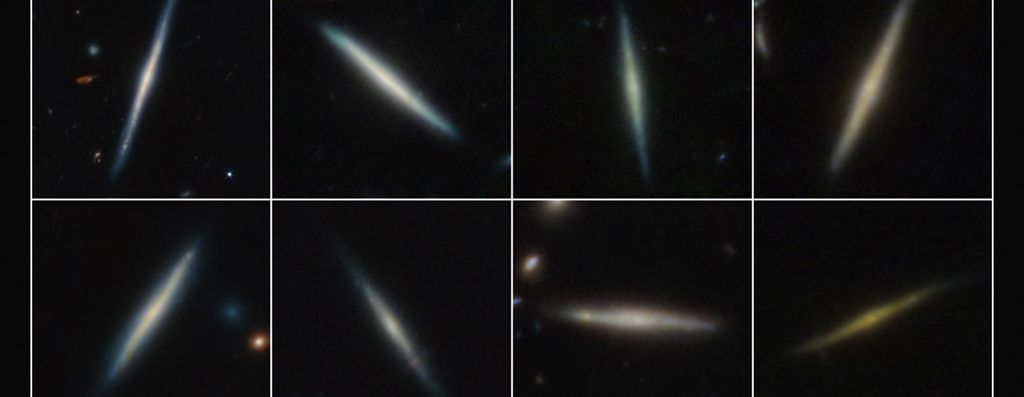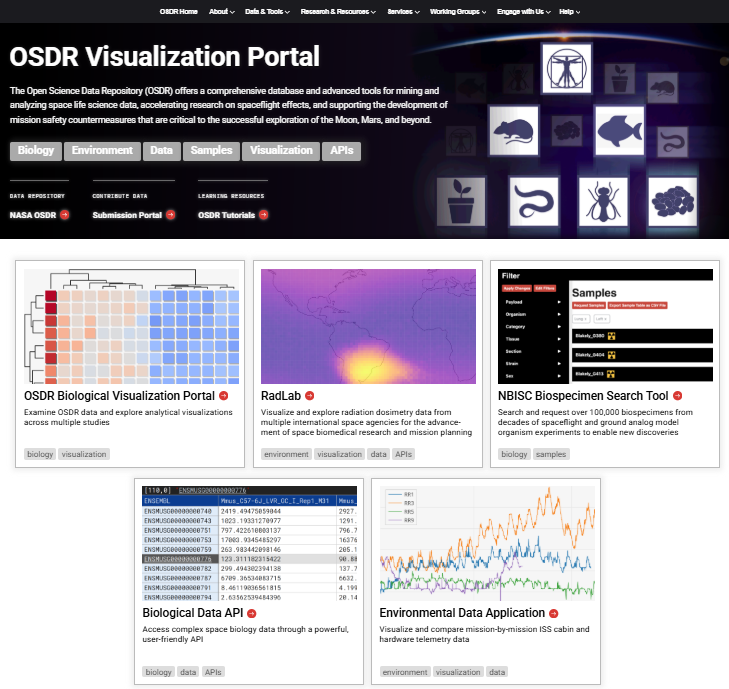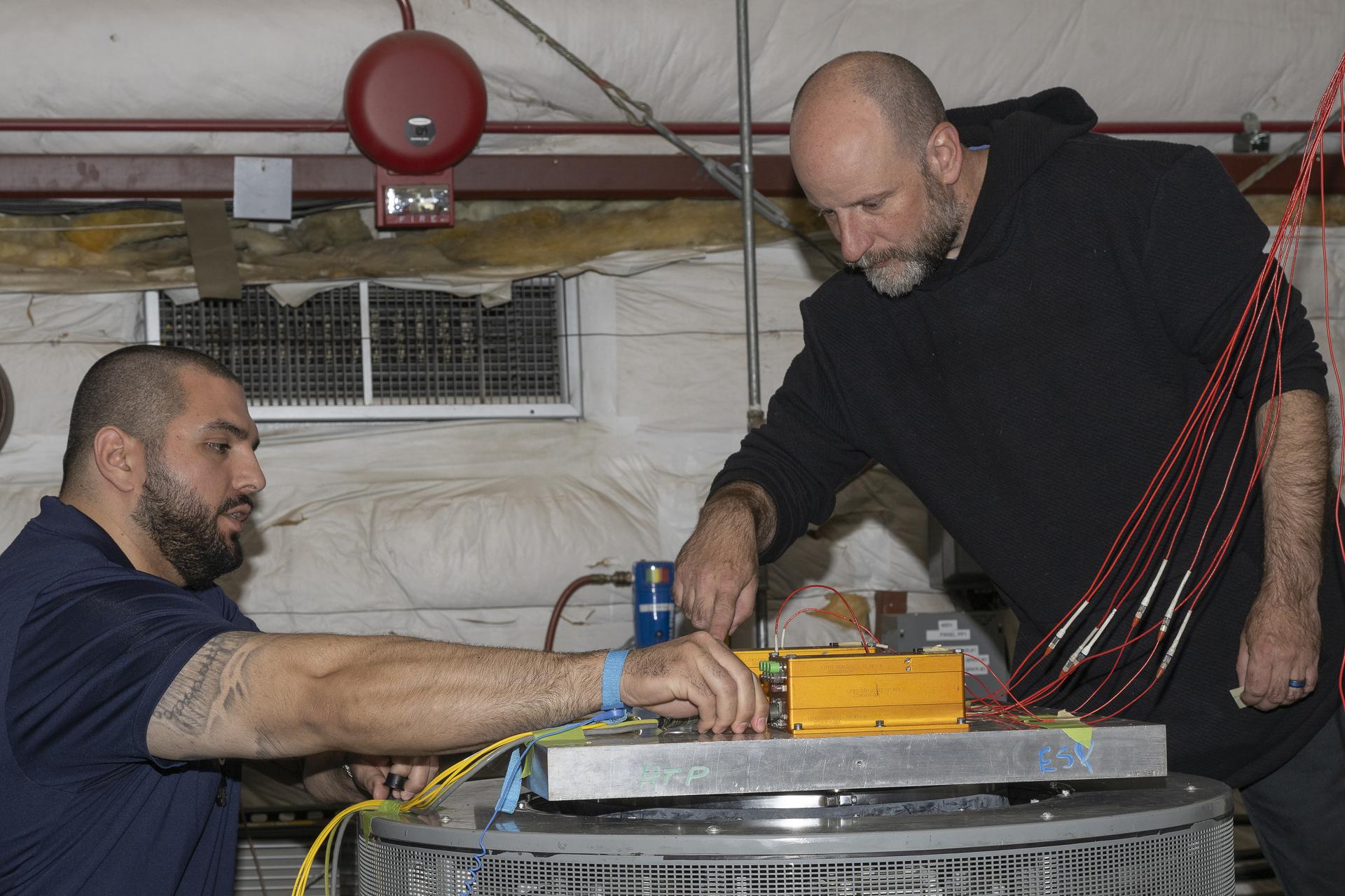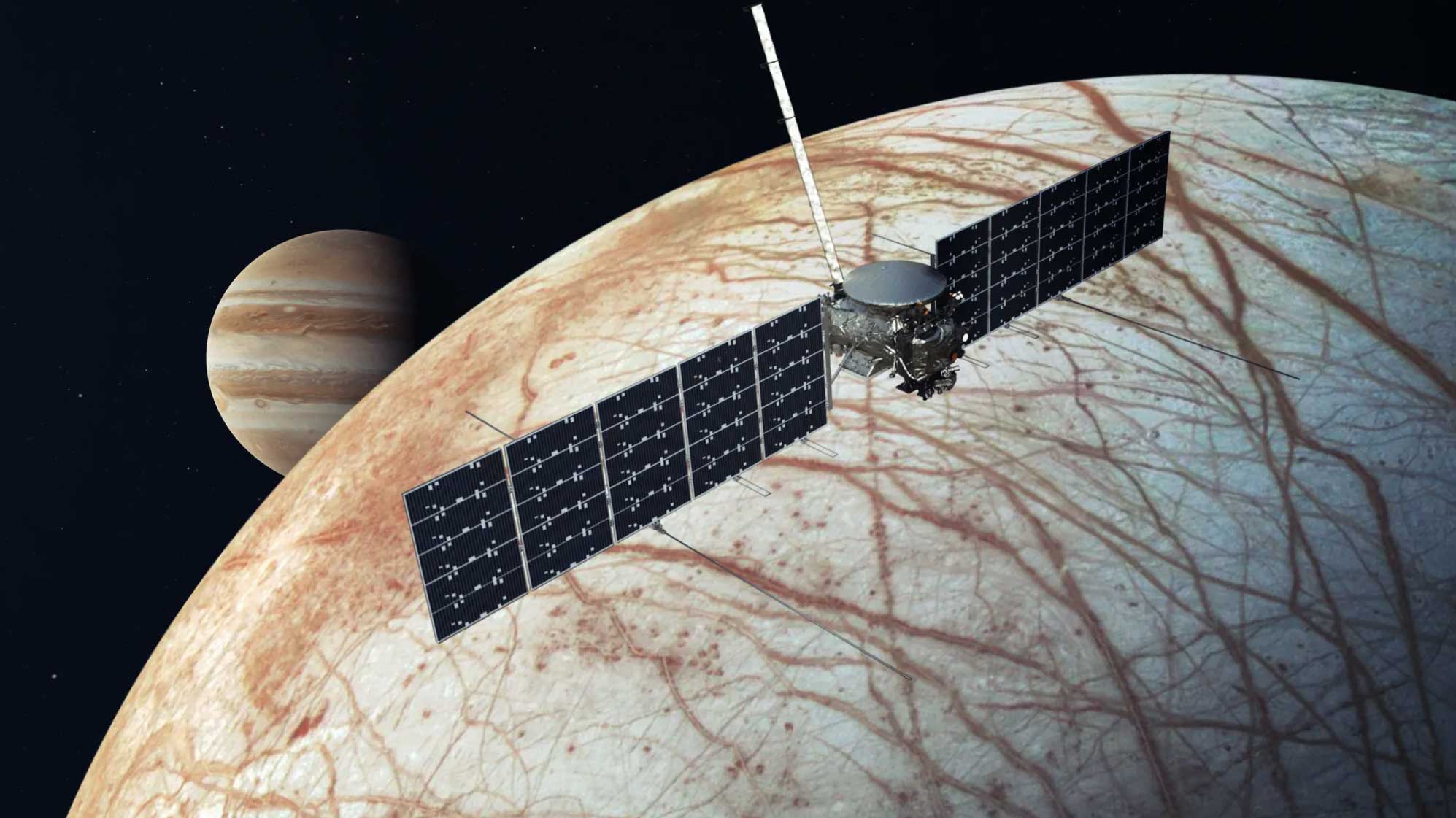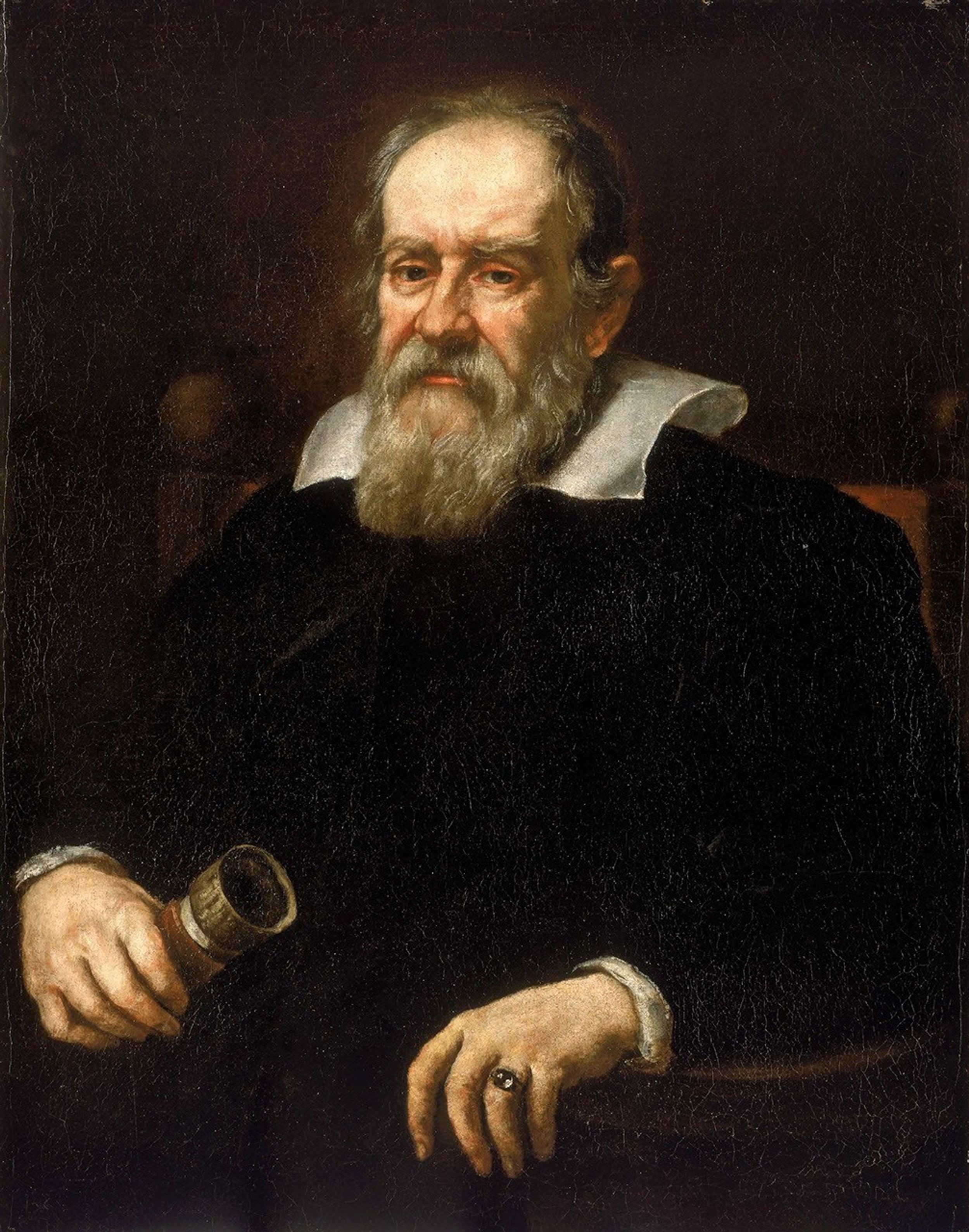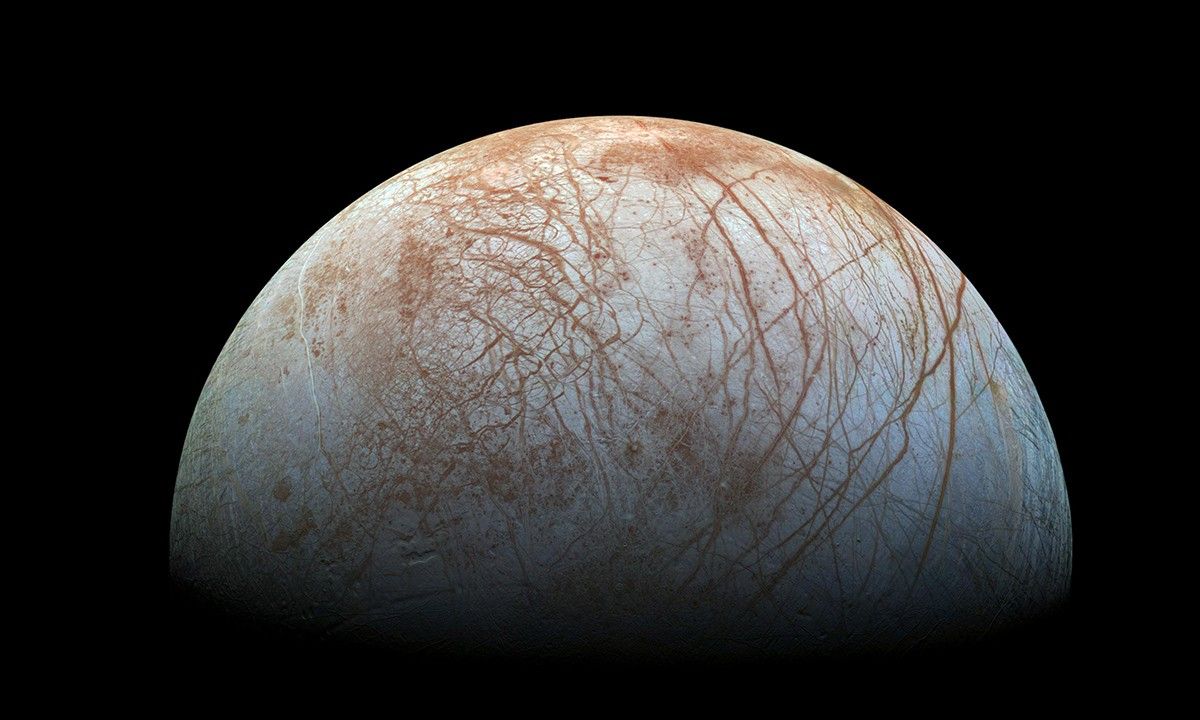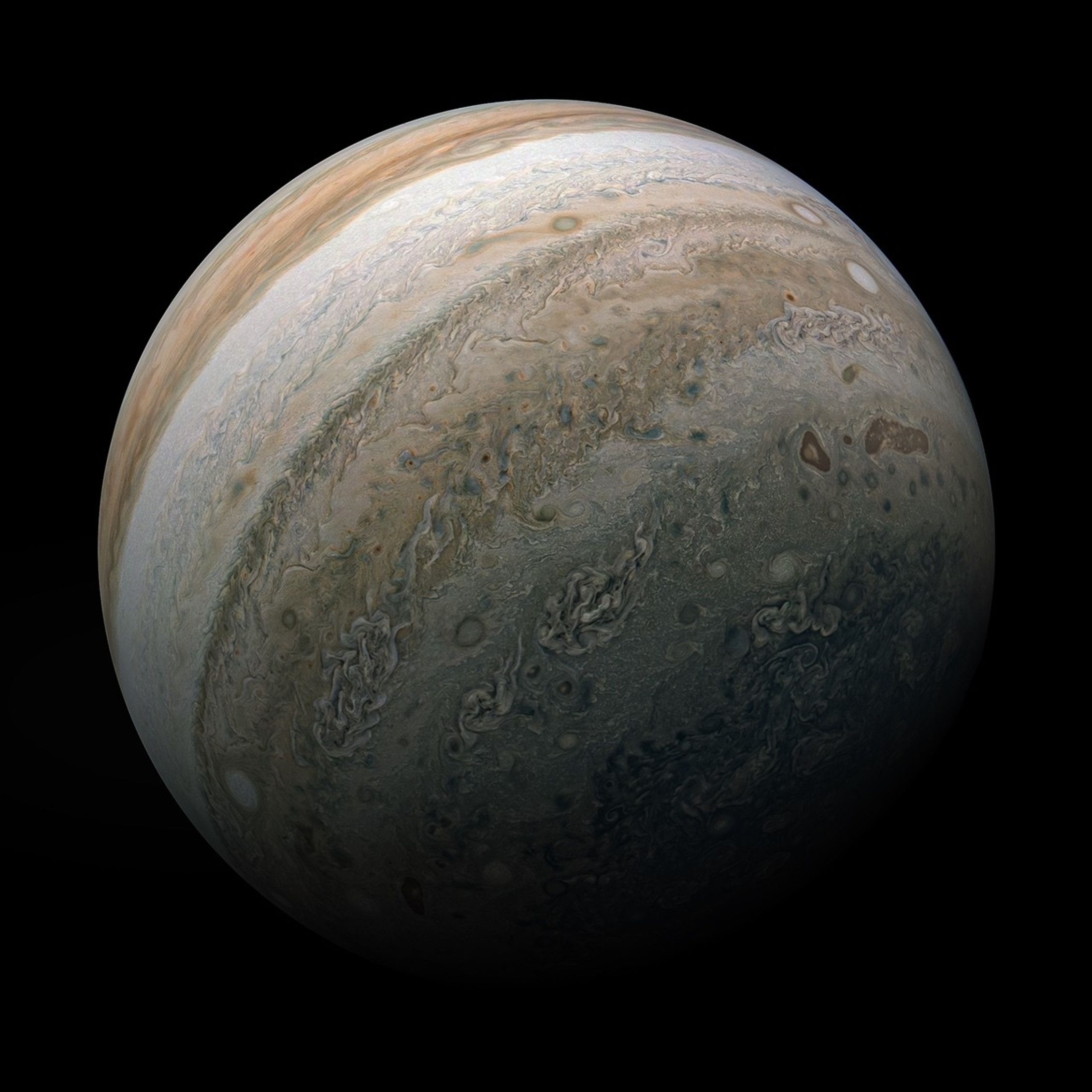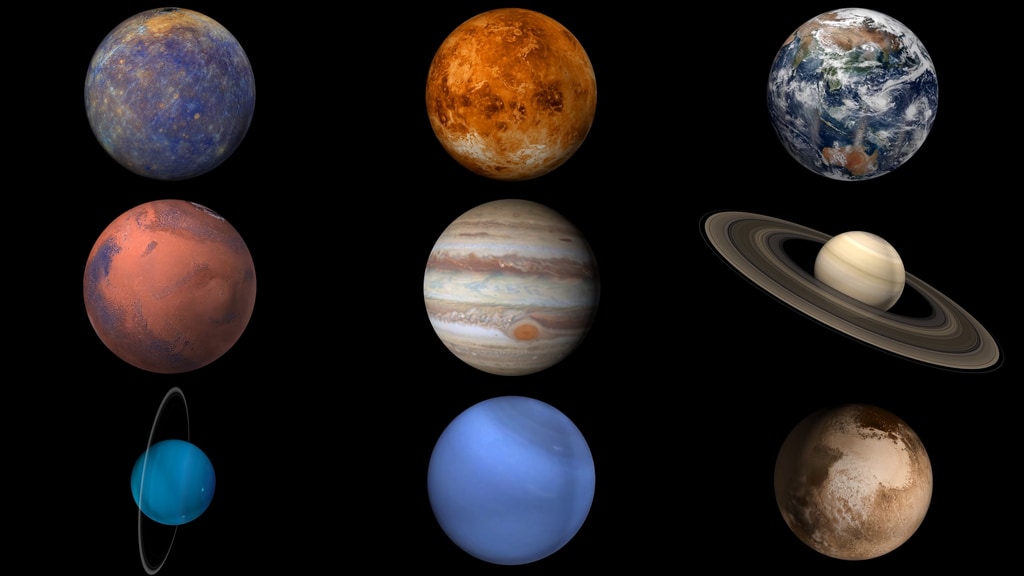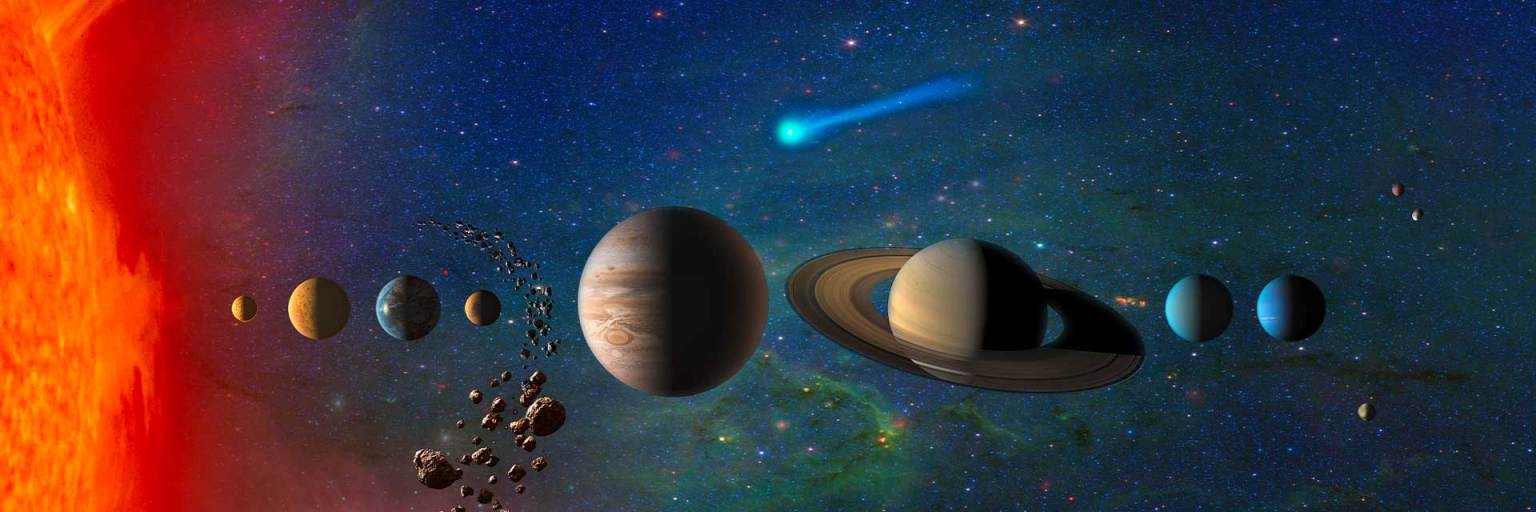Europa Discovered
Europa was discovered by Italian astronomer Galileo Galilei with a homemade telescope on Jan. 8, 1610. He also spotted Jupiter's three other large moons —Ganymede, Callisto, and Io. The discovery transformed the way we look at the cosmos. It showed conclusively that Earth was not the center of the universe.
Spacecraft Exploration
It wasn't until the early 1970s that we got our first look at Europa from a spacecraft. So far, six spacecraft have flown in the vicinity of Europa. Astronomers also study the moon with the Hubble Space Telescope, which is orbiting Earth. Two spacecraft are on their way to Europa — NASA's Europa Clipper and ESA's Jupiter Icy Moons Explorer, or Juice. Europa Clipper’s main science goal is to determine whether there are places below the surface of Europa that could support life. Juice will make detailed observations of Jupiter and three of its largest moons —Ganymede, Callisto and Europa.
Timeline of Missions to Europa
-
01
Dec. 3, 1973: Pioneer 10
NASA's Pioneer 10 captured the first spacecraft images of Jupiter and its largest moons. It took a single photo of Europa, capturing bright and dark regions. It didn't get close enough to see the moon in detail.
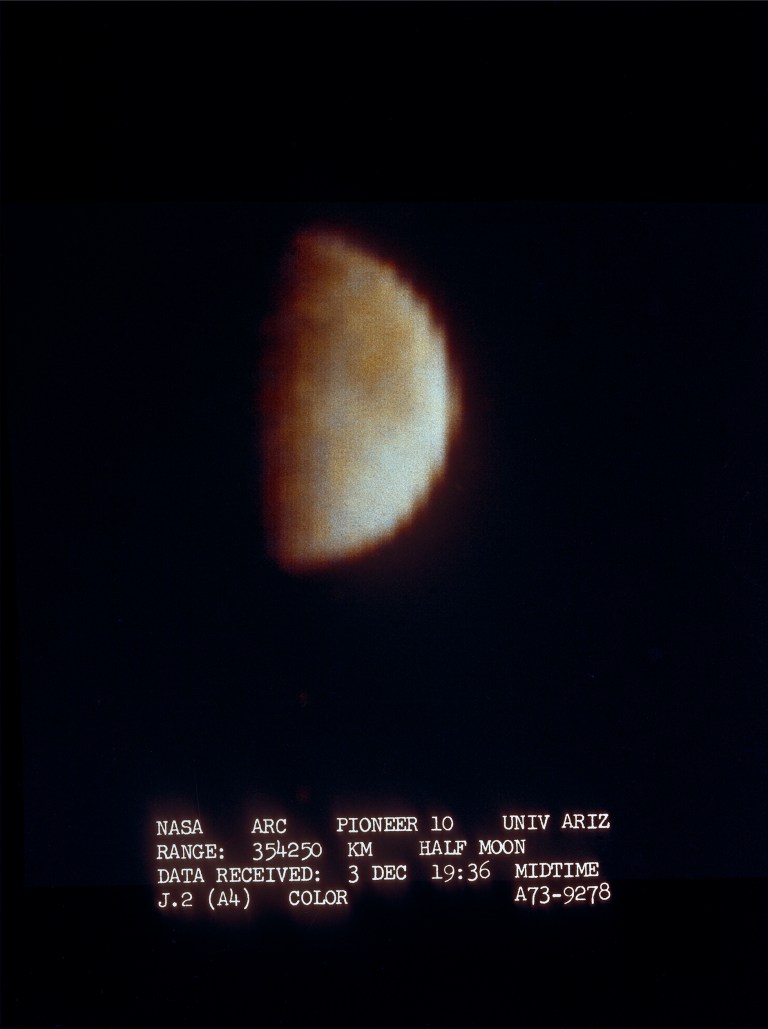 NASA's Pioneer 10 took the first image of Europa from a spacecraft during a flyby in December 1973. This image is from a distance, although bright and dark regions on Europa are clearly present.NASA/JPL-Caltech
NASA's Pioneer 10 took the first image of Europa from a spacecraft during a flyby in December 1973. This image is from a distance, although bright and dark regions on Europa are clearly present.NASA/JPL-Caltech -
02
Dec. 3, 1974: Pioneer 11 Flyby
Pioneer 11 flew within 365,000 miles (587,000 kilometers) of Europa on this day as it maneuvered through the Jovian system. It sent back about 460 images of Jupiter and its Galilean satellites. The spacecraft soared past Jupiter at a distance of 26,570 miles (42,760 kilometers) above the planet's cloud tops — three times closer than its sibling, Pioneer 10.
 The Pioneer 11 spacecraft in 1973.NASA/JPL-Caltech
The Pioneer 11 spacecraft in 1973.NASA/JPL-Caltech -
03
March 5, 1979: Voyager 1 Flyby
The two Voyager spacecraft gave us the first detailed images of Europa. Voyager 1 did not get close enough to Europa to obtain very high-resolution images, but the quality was good enough to reveal that Europa’s icy surface was covered in intersecting lines, along with dark patches of an unknown reddish material.
 Voyager 1 took this image of Europa from a range of 1.6 million miles(2,869,252 kilometers).NASA/JPL-Caltech
Voyager 1 took this image of Europa from a range of 1.6 million miles(2,869,252 kilometers).NASA/JPL-Caltech -
04
July 9, 1979: Voyager 2
Voyager 2 helped us to finally see Europa clearly enough to distinguish individual surface features. The spacecraft sent back higher resolution images showing that some of the lines spotted by Voyager 1 were dark and reddish — a telling sign to scientists that Europa’s crust had been fractured and filled by material oozing up from the interior. The images also showed that Europa’s surface doesn’t have many large craters or tall mountains.
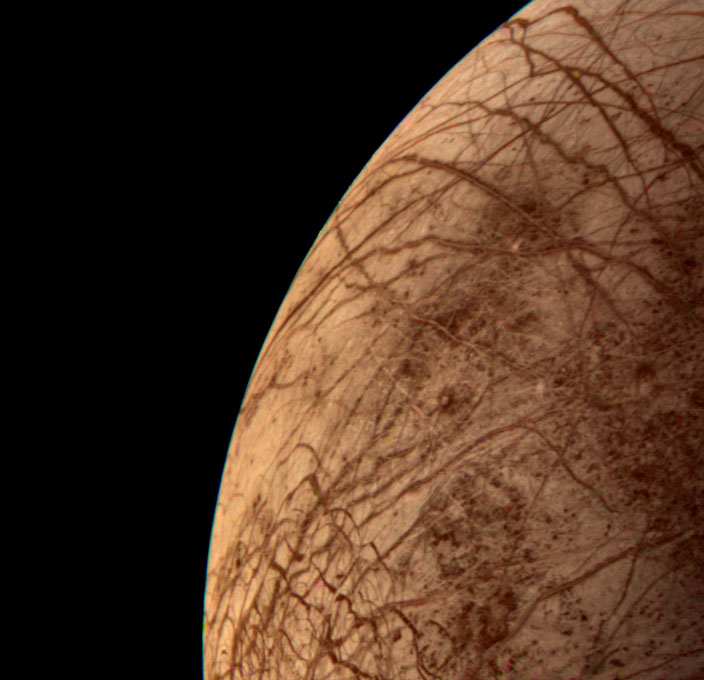 This color image of Europa was taken by Voyager 2 during its close encounter on July 9, 1979.NASA/JPL-Caltech
This color image of Europa was taken by Voyager 2 during its close encounter on July 9, 1979.NASA/JPL-Caltech -
05
Oct. 18, 1989: Galileo Mission
The Galileo spacecraft gave us a major discovery about Europa: the first evidence that the icy moon may have an ocean beneath its surface with more water than all of Earth’s oceans combined. Early in the Galileo mission, the spacecraft made three flybys, beaming back stunning images of Europa along with detailed observations of the moon's surface temperatures and chemistry, and its magnetic environment. The discoveries prompted the Galileo Europa Mission, an extension of Galileo’s original mission, sending the spacecraft on several additional flybys of Europa.
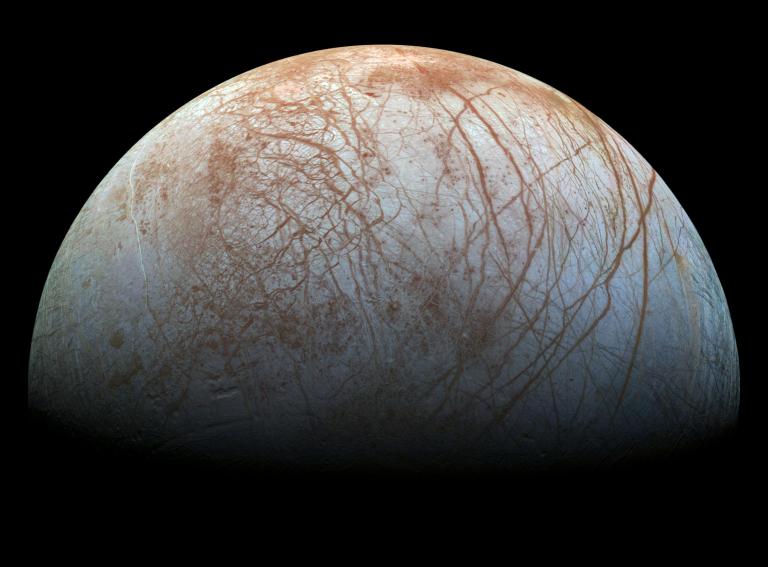 The puzzling, fascinating surface of Europa looms large in this color view made from images taken by NASA's Galileo spacecraft in the late 1990s.NASA/JPL-Caltech/SETI Institute
The puzzling, fascinating surface of Europa looms large in this color view made from images taken by NASA's Galileo spacecraft in the late 1990s.NASA/JPL-Caltech/SETI Institute -
06
Dec. 8, 1997: Galileo Europa Mission (GEM)
During a two-year extension of its original mission, NASA’s Galileo spacecraft conducted an intensive study of Europa during eight consecutive close encounters, dipping as close as 125 miles (201 kilometers) of Europa’s surface. Data included images of Europa at a range of scales, furthering our knowledge about the moon’s frozen surface and the intriguing suggestion that a liquid ocean may lie underneath.
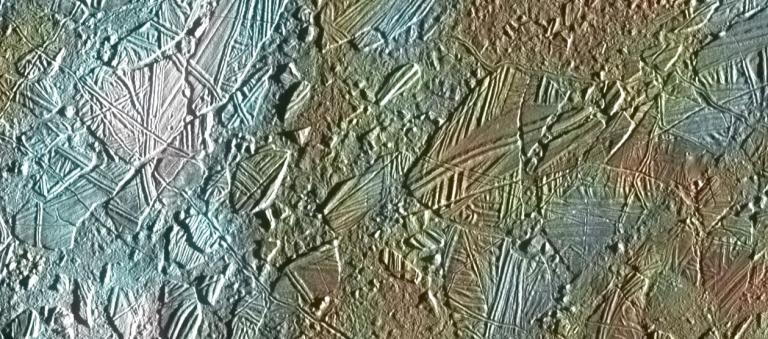 Galileo captured this view of a small region of the thin, disrupted, ice crust in the Conamara region of Europa.NASA/JPL/University of Arizona
Galileo captured this view of a small region of the thin, disrupted, ice crust in the Conamara region of Europa.NASA/JPL/University of Arizona -
07
October 2000-March 2001: Cassini-Huygens Flyby
The Cassini-Huygens mission to Saturn made a swing by Jupiter to pick up speed, and for about six months, it joined NASA's Galileo spacecraft in studying the Jovian system. Cassini analyzed Europa’s faint atmosphere and took thousands of images of Jupiter and its moons.
 Europa, seen against Jupiter, from NASA's Cassini spacecraft on Dec. 7, 2000.NASA/JPL/University of Arizona
Europa, seen against Jupiter, from NASA's Cassini spacecraft on Dec. 7, 2000.NASA/JPL/University of Arizona -
08
Feb. 28, 2007: New Horizons Flyby
NASA’s New Horizons spacecraft flew by Jupiter on its way to Pluto, capturing a dramatic image of Europa in the distance beyond Jupiter's cloud tops. The spacecraft was 1.8 million miles (3 million kilometers) from Europa when the image was taken.
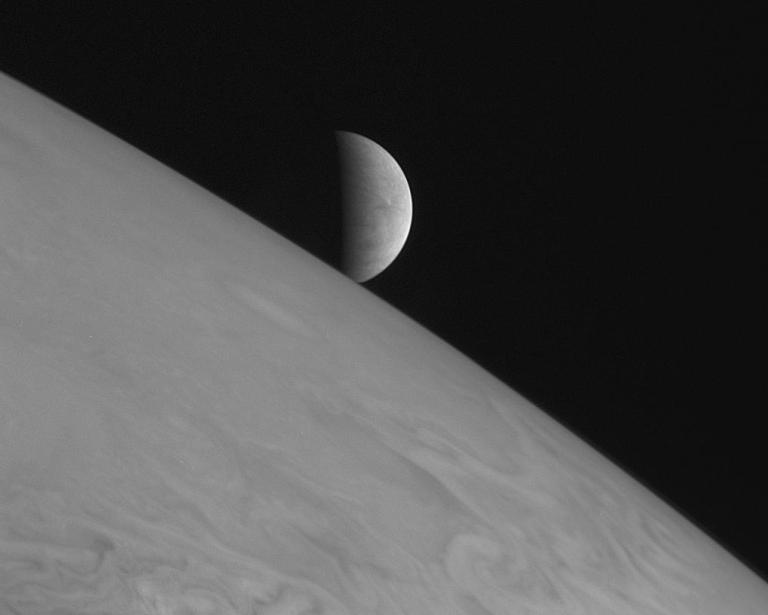 NASA's New Horizons spacecraft took this image of Europa hanging above Jupiter's cloud tops with its Long Range Reconnaissance Imager (LORRI) on Feb. 28, 2007, six hours after the spacecraft's closest approach to Jupiter.NASA/Johns Hopkins University Applied Physics Laboratory/Southwest Research Institute
NASA's New Horizons spacecraft took this image of Europa hanging above Jupiter's cloud tops with its Long Range Reconnaissance Imager (LORRI) on Feb. 28, 2007, six hours after the spacecraft's closest approach to Jupiter.NASA/Johns Hopkins University Applied Physics Laboratory/Southwest Research Institute -
09
December 2013: Hubble Detects Water Vapor
Scientists published a study in December 2013 indicating that NASA's Hubble Space Telescope had earlier observed the biproducts of water vapor above Europa, providing the first strong evidence that plumes of water may be erupting from the moon's surface. The study was based on ultraviolet images taken by Hubble in November and December 2012. The data indicated the putative plumes were reaching an altitude of about 125 miles (200 kilometers) before falling back to the surface.
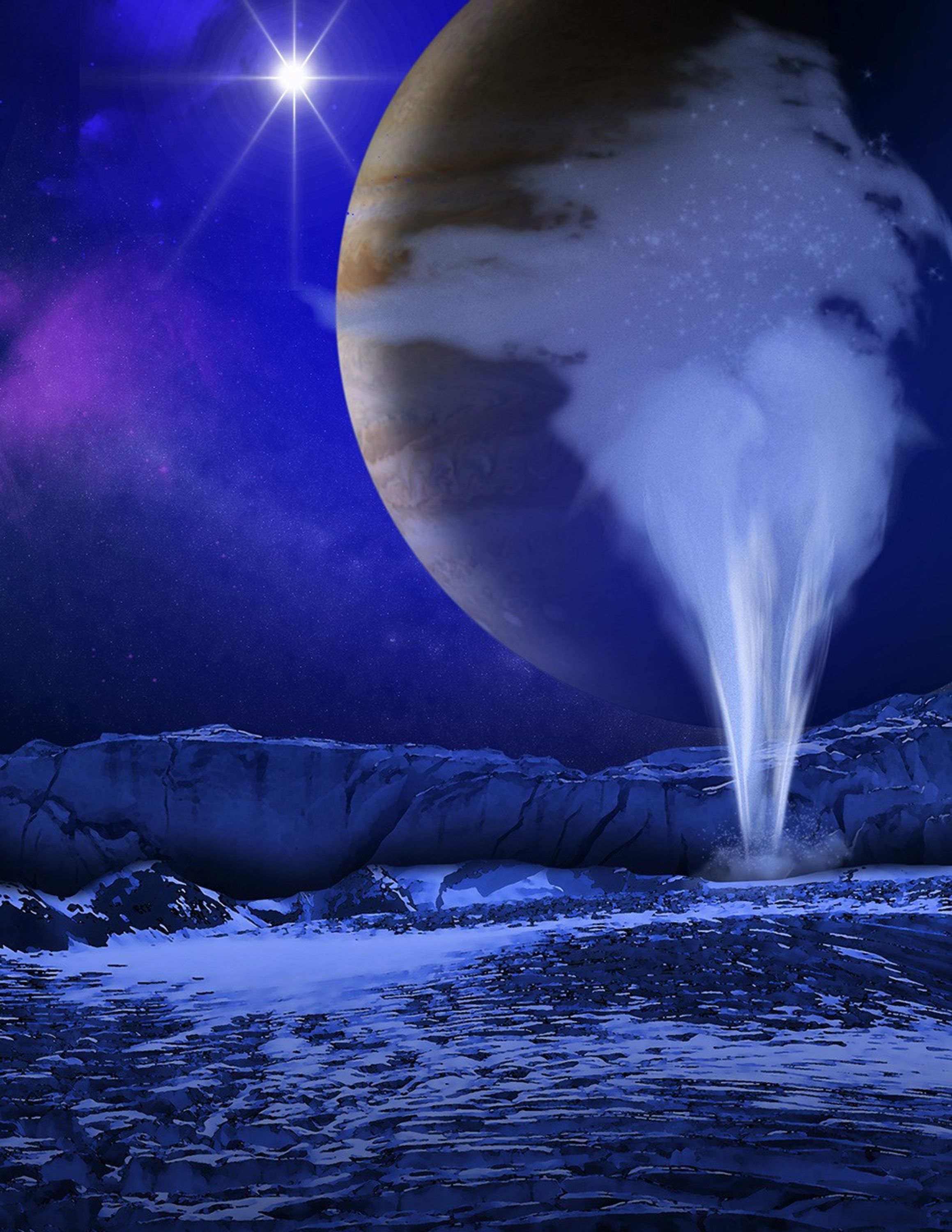 An artist's concept of a plume of water vapor thought to be ejected off the frigid, icy surface of Europa.NASA/ESA/K. Retherford/SWRI
An artist's concept of a plume of water vapor thought to be ejected off the frigid, icy surface of Europa.NASA/ESA/K. Retherford/SWRI -
10
June 2016: Juno Mission to Jupiter
NASA’s Juno spacecraft captured a time-lapse movie of Europa and the other three Galilean moons orbiting Jupiter as it approached the giant planet above its north pole in June 2016. This was a unique perspective on the moons in motion orbiting Jupiter, as previous missions and telescopes viewed the moons from a more equatorial perspective.
 Jupiter surrounded by its four largest moons.NASA
Jupiter surrounded by its four largest moons.NASA -
11
September 2016: Hubble Spots Possible Plumes
Astronomers using NASA's Hubble Space Telescope imaged possible finger-like plumes of water vapor rising about 125 miles (200 kilometers) above Europa’s surface. The astronomers inferred the possible plumes on three separate occasions, bolstering earlier evidence gathered by Hubble that Europa may have intermittent plume activity.
This composite image shows suspected plumes of water vapor erupting at the 7 o'clock position off the limb of Jupiter's moon Europa.NASA/ESA/W. Sparks (STScI)/USGS Astrogeology Science Center -
12
May 2018: New Evidence for Europa Plumes
Scientists re-examined data collected by NASA’s Galileo spacecraft during its closest pass over Europa in 1997 and found additional evidence that Europa is probably venting plumes of water above its surface. The researchers combined the data from Galileo with a 3D model and Hubble images, and found strong evidence that the spacecraft likely flew through an erupting plume.
 An artist’s concept of Jupiter and Europa with the Galileo spacecraft after its pass through a plume erupting from Europa’s surface.NASA/JPL-Caltech
An artist’s concept of Jupiter and Europa with the Galileo spacecraft after its pass through a plume erupting from Europa’s surface.NASA/JPL-Caltech

